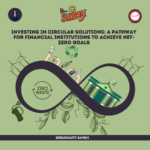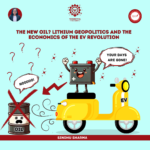By- Purvee Khandelwal
One of the main tools to control growth is raising or lowering interest rates. Lower interest rates encourage people or companies to spend money, rather than save. But when interest rates are at almost zero, central banks need to adopt different unconventional policies – such as pumping money directly into the financial system i.e. quantitative easing, or QE.
How does it work?
The Central bank purchases financial assets – mostly government bonds – from pension funds, insurance companies, and banks, among other institutions, with electronic cash. It paid for these bonds by creating new central bank reserves – the type of money that bank use to pay each other and the amount of commercial bank money used for lending purposes.
Who has tried QE?
Between 2008 and 2016, the US Federal Reserve in total bought bonds worth more than $3.7 trillion. The UK created £375bn ($550bn) of new money in its QE program between 2009 and 2012. Then in August 2016, the Bank of England said it would buy £60bn of UK government bonds and £10bn of corporate bonds, amid uncertainty over the Brexit process and worries about productivity and economic growth. The Eurozone began its program of QE in January 2015 and has so far pumped in $600bn of extra money.
What are the expected gains?
The new money swells the size of bank reserves in the economy by the quantity of assets purchased—hence “quantitative” easing. Like lowering interest rates, QE is supposed to stimulate the economy by encouraging banks to make more loans. The idea is that banks take the new money and buy assets , such as give loans, to replace the ones they have sold to the central bank. That raises stock prices and lowers interest rates, which in turn boosts investment, spending, and consumption.
What are the risks?
The biggest concern is that pumping more money into the economy could ultimately lead to an inflation problem. Also, the newly created money usually goes directly into emerging markets (through financial markets) and commodity-based economies. Thus, local businesses may not get adequate loans. BRICS countries argue that such actions amount to protectionism and competitive devaluation as QE causes inflation to rise in their countries and penalizes their industries. Thus, a far more effective way to boost the economy would be for the Central bank to create money, grant it directly to the government, and allow the government to spend it directly into the real economy. However, this could also lead to reckless spending by government. Hence, the debate on what tool to use to boost growth continues.














Leave a comment